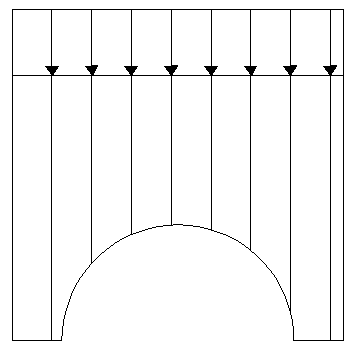MCQs
Total Questions : 189
| Page 16 of 19 pages
Answer: Option A. -> \(σ_z=q\left[1-\left[\frac{1}{1+(\frac{a}{z})^2}\right]^{\frac{3}{2}}\right] \)
Answer: (a).\(σ_z=q\left[1-\left[\frac{1}{1+(\frac{a}{z})^2}\right]^{\frac{3}{2}}\right] \)
Answer: (a).\(σ_z=q\left[1-\left[\frac{1}{1+(\frac{a}{z})^2}\right]^{\frac{3}{2}}\right] \)
Answer: Option A. -> 42.34
Answer: (a).42.34
Answer: (a).42.34
Answer: Option C. -> 0.0844
Answer: (c).0.0844
Answer: (c).0.0844
Answer: Option A. -> \(K_B= \left[1-\left[\frac{1}{1+(\frac{a}{z})^2}\right]^{\frac{3}{2}}\right] \)
Answer: (a).\(K_B= \left[1-\left[\frac{1}{1+(\frac{a}{z})^2}\right]^{\frac{3}{2}}\right] \)
Answer: (a).\(K_B= \left[1-\left[\frac{1}{1+(\frac{a}{z})^2}\right]^{\frac{3}{2}}\right] \)
Answer: Option B. -> σz=q[1-cos³θ]
Answer: (b).σz=q[1-cos³θ]
Answer: (b).σz=q[1-cos³θ]
Answer: Option C. -> \(σ_z=\frac{2q’}{πz}\frac{1}{[1+(\frac{x}{z})^2 ]^2} \)
Answer: (c).\(σ_z=\frac{2q’}{πz}\frac{1}{[1+(\frac{x}{z})^2 ]^2} \)
Answer: (c).\(σ_z=\frac{2q’}{πz}\frac{1}{[1+(\frac{x}{z})^2 ]^2} \)
Answer: Option A. -> \(σ_z=\frac{2q’}{πz}\)
Answer: (a).\(σ_z=\frac{2q’}{πz}\)
Answer: (a).\(σ_z=\frac{2q’}{πz}\)
Answer: Option A. -> \(σ_z=\frac{q}{π}(θ+sinθ)\)
Answer: (a).\(σ_z=\frac{q}{π}(θ+sinθ)\)
Answer: (a).\(σ_z=\frac{q}{π}(θ+sinθ)\)
Answer: Option A. -> one direction only
Answer: (a).one direction only
Answer: (a).one direction only
Answer: Option A. -> real elastic material
Answer: (a).real elastic material
Answer: (a).real elastic material

















